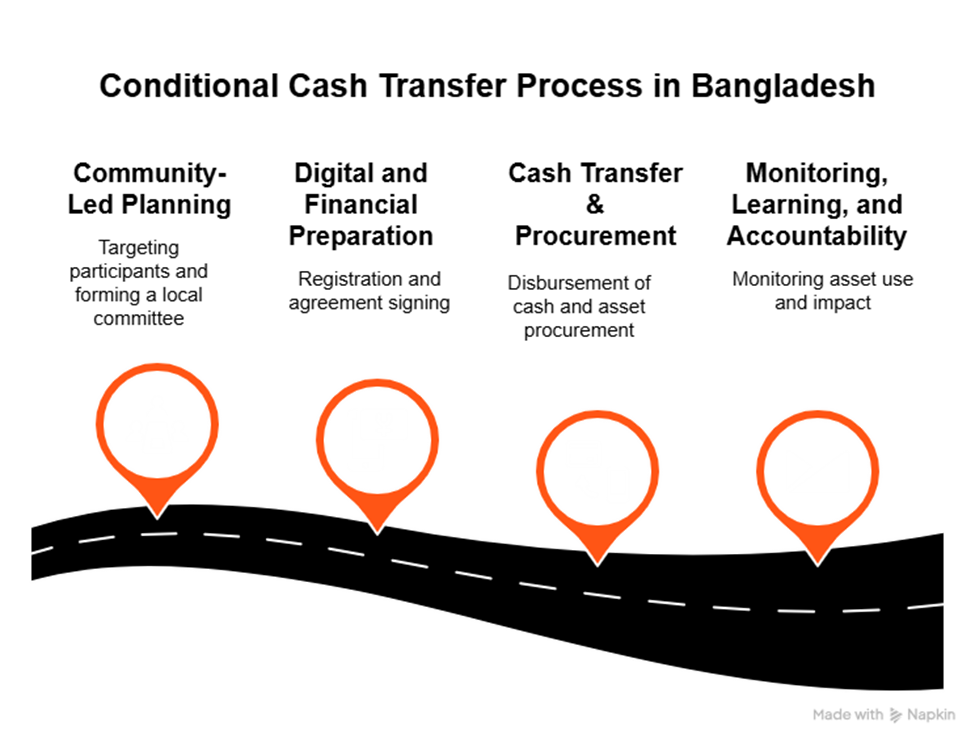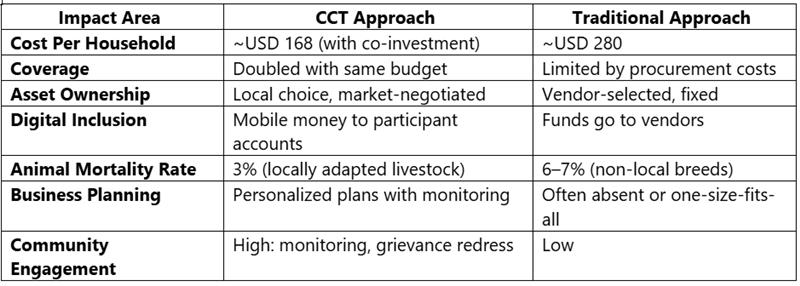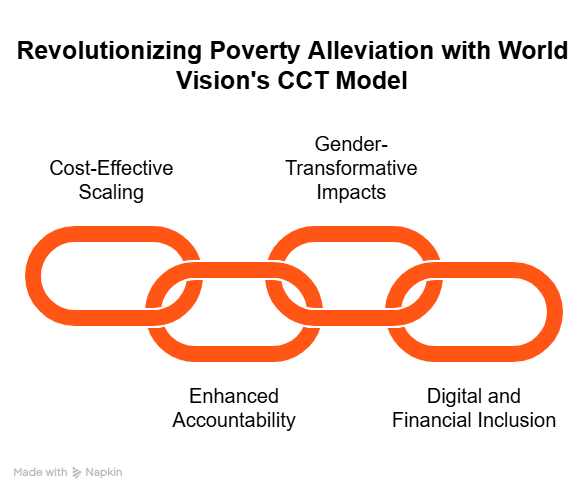Empowering the Poorest with Dignity: How Conditional Cash Transfers Are Revolutionising the Ultra Poor Graduation Model in Bangladesh
“Now my family is no longer dependent on a single income. I can feed my children better, support their education, and dream of a brighter future.” – Somija Khatun, UPG participant
Across Bangladesh’s poverty pockets, a quiet transformation is underway led not by handouts, but by empowerment. At the heart of this change lies World Vision Bangladesh’s innovative use of Conditional Cash Transfers (CCTs) within its Ultra Poor Graduation (UPG) programme—a bold shift away from traditional asset transfers towards a community-driven, dignity-affirming model of livelihood development.
From Dependency to Dignity: Why CCT Matters
In the traditional UPG model, asset transfer—such as livestock or tools—is a high-cost, staff-heavy process where third-party vendors procure goods, often with minimal input from the ultra-poor themselves. This approach, while effective, limits agency, choice, and efficiency.
World Vision Bangladesh saw an opportunity to do things differently.
CCTs empower ultra-poor households—mostly women—to receive funds directly via mobile money, develop personalized business plans, co-invest, and procure assets themselves. It’s not just about transferring money. It’s about transferring decision-making power.
🛠️ How the Model Works: The Four Phases of CCT in UPG
- Community-Led Planning
- Targeting of participants and formation of a local CCT committee
- Development of personalized livelihood and business plans
- Assessment of self-contribution potential
- Digital and Financial Preparation
- Registration through mobile money platforms
- Formal agreement signing and digital inclusion of beneficiaries
- Cash Transfer & Procurement
- Disbursement of conditional cash
- Local procurement of assets by the participants with CCT committee guidance
- Monitoring, Learning, and Accountability
- Community-led monitoring and complaint mechanisms
- Validation of asset use and impact tracking
- Public celebration meetings to reinforce dignity and progress

The Model in Action: Community-Led, Transparent, and Inclusive
The CCT approach is intentionally designed to promote transparency, inclusion, and resilience. Here's how it works:
- Community-based CCT committees select participants, verify plans, and oversee monitoring.
- Business plans are co-created with beneficiaries, often with up to 50% co-financing from their own savings or community support.
- Mobile money platforms ensure leak-proof, dignified disbursement to the beneficiaries’ own phones.
- Local procurement reduces costs, supports markets, and allows participants to negotiate directly and verify asset quality.
This model not only reduces cost per household by nearly 40% (from USD 280 to USD 168) but also significantly increases reach, effectively doubling the number of ultra-poor families supported.
Results at a Glance

Women at the Forefront
Over 95% of UPG participants are women, and the CCT model is transforming not just livelihoods, but gender norms.
“For the first time, I received money in my name. I learned how to budget, negotiate, and decide what’s best for my family,” says Somija, now a multi-income earner in Rajshahi.
Through digital financial inclusion, asset management training, and business mentorship, women like Somija are moving from the margins to becoming decision-makers, entrepreneurs, and role models.
From Free-Receivers to Contributors
CCT also repositions participants in the eyes of their communities—not as passive aid recipients, but as active contributors to local economies.
Communities report greater engagement in oversight, faster asset mobilization, and pride in locally driven outcomes. Mortality rates of goats have halved due to better selection and ownership.
Challenges and Considerations
Scaling a people-first model comes with real-world complexities:
- Ensuring timely business plan execution amid market variability.
- Risk of diverted use of funds in emergencies.
- Training needs for mixed livelihood portfolios.
But with robust community structures, grievance mechanisms, and adaptive coaching, these are surmountable challenges.
Scaling Up: From Pilot to Practice
Piloted with 2,422 households, CCT under UPG now reaches over 20,000 families across Bangladesh. World Vision Bangladesh is scaling this model in fragile contexts, disaster-prone areas, and in climate-vulnerable regions—with safeguards for cost-sharing and digital access.
What This Means for Development Leaders
World Vision Bangladesh’s CCT experience offers an evidence-based model for humanitarian and development practitioners seeking:
- Cost-effective scaling of graduation models.
- Enhanced accountability and community buy-in.
- Gender-transformative impacts.
- Digital and financial inclusion in last-mile settings.
It’s not just about giving cash. It’s about giving choice, voice, and the tools to thrive.

Final Word
In an era where efficiency, empowerment, and equity matter more than ever, World Vision Bangladesh’s Conditional Cash Transfer model exemplifies a shift toward locally led, dignity-first development. It aligns perfectly with global ambitions for sustainable livelihoods, SDGs, and climate-smart resilience.
And behind every success statistic is a story like Somija’s—proof that when we trust the poor with resources and respect, they rise beyond poverty to build lasting change.
Call to Action
👉 Are you a development practitioner, donor, or policymaker interested in inclusive, cost-effective, and scalable solutions?
📩 Reach out to World Vision Bangladesh to explore how the CCT-UPG model can work in your context.
Written by By Arunava Saha, Deputy Director- Integrated Technical Programme Development,
World Vision Bangladesh
📍 Follow us on LinkedIn | 🌍 www.wvi.org/bangladesh | ✉️ arunava_saha@wvi.org